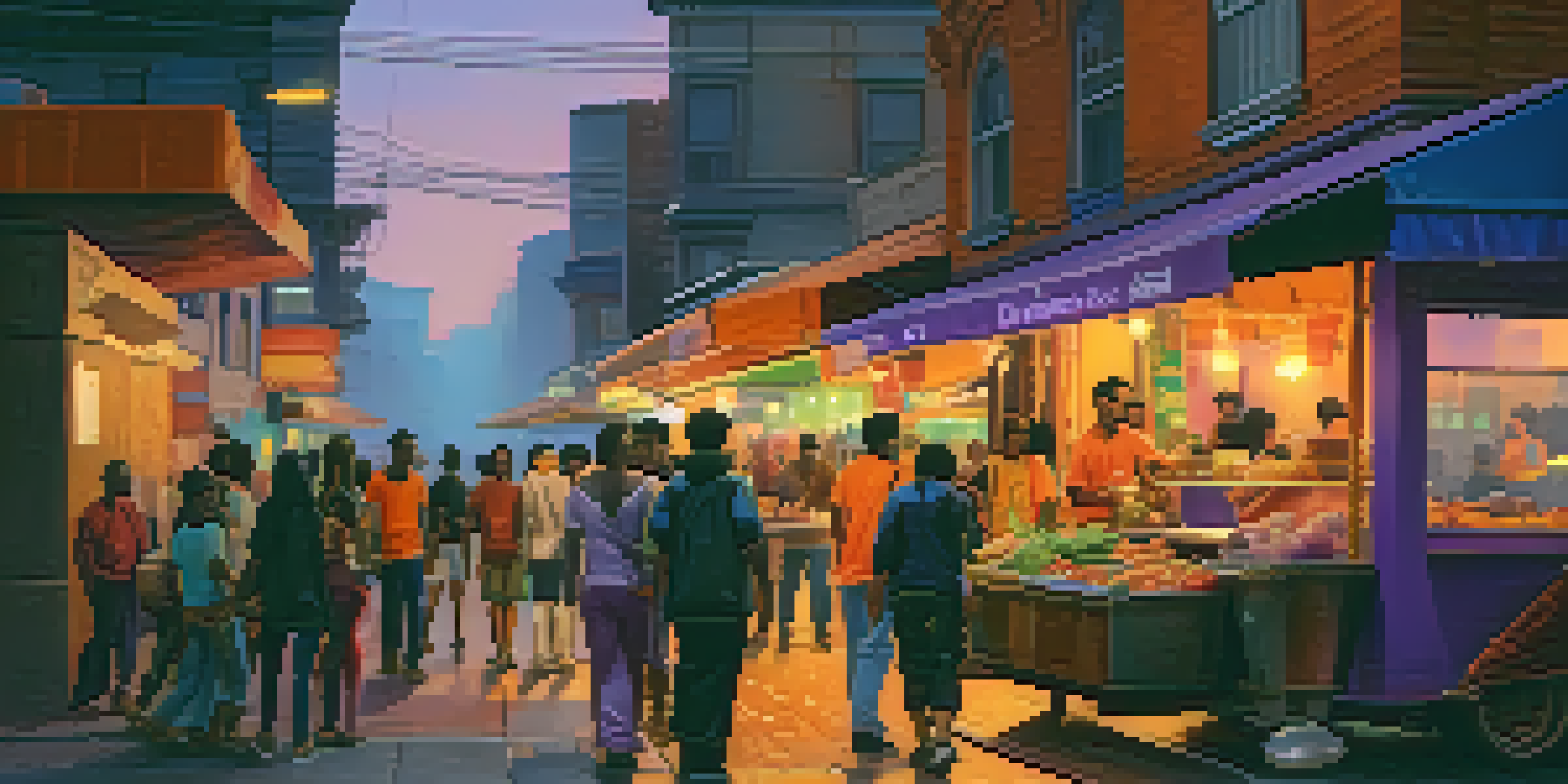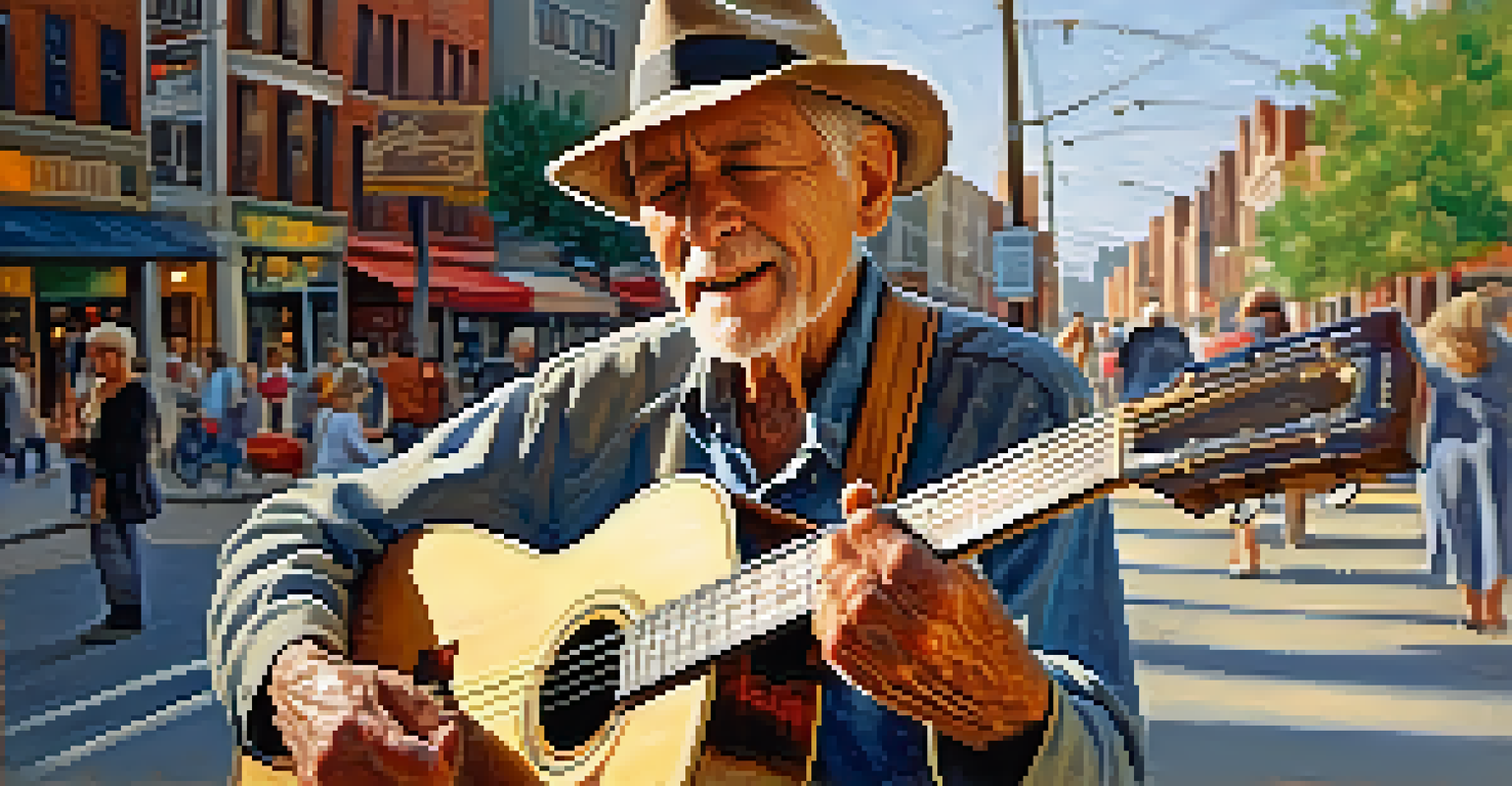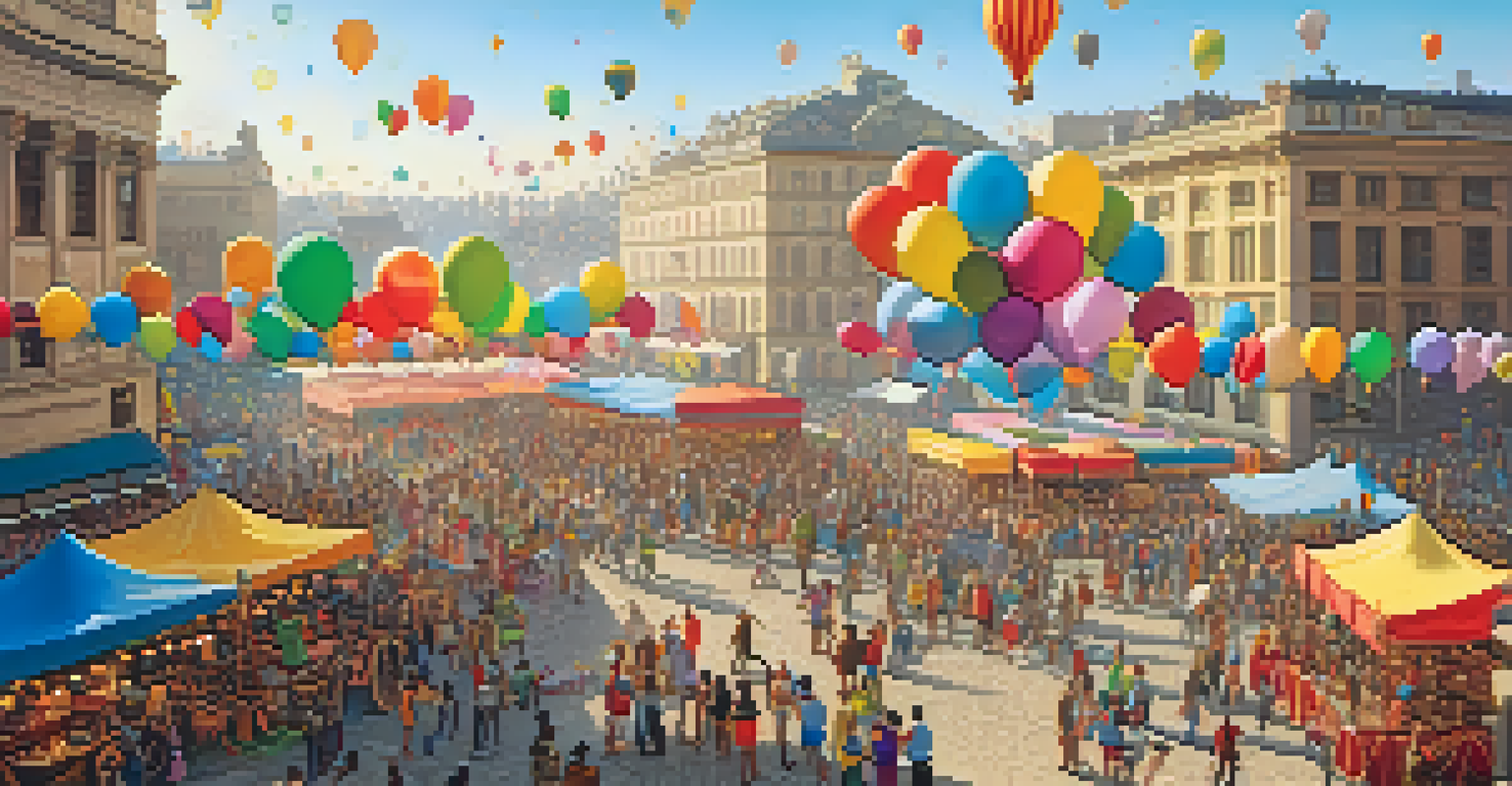Iconic Photographers Who Shaped the Street Photography Genre

Henri Cartier-Bresson: The Father of Street Photography
Henri Cartier-Bresson is often hailed as the father of street photography. His philosophy centered on the 'decisive moment,' capturing fleeting instances that tell a story. This approach encourages photographers to be in the right place at the right time, ready to snap the perfect shot.
There is nothing worse than a sharp photograph of a fuzzy idea.
Cartier-Bresson's images are distinguished by their candid nature, often revealing raw human emotions and everyday life. His technique of using a 35mm camera allowed for spontaneity, enabling him to blend into the background and capture genuine moments. One of his iconic photos, 'Behind the Gare Saint-Lazare,' exemplifies this blending of artistry and timing.
His influence extends beyond photography to art and culture, inspiring countless photographers to explore urban landscapes and human interactions. The essence of his work encourages us to look closer at the world around us, reminding us that beauty often lies in the ordinary.
Vivian Maier: The Mysterious Street Photographer
Vivian Maier's story is as captivating as her photographs. A nanny by profession, she shot over 150,000 images, most of which went unseen until after her death. Her work showcases a unique perspective on urban life, revealing the vibrancy and complexity of the streets she roamed.

Maier's photography often features striking contrasts and a keen eye for composition. With a talent for capturing candid moments, her images evoke a sense of nostalgia and intimacy. Her self-portraits also invite viewers into her world, creating a connection that feels personal and relatable.
Street Photography's Pioneers
Henri Cartier-Bresson, Vivian Maier, and Garry Winogrand are key figures whose unique styles and perspectives have shaped the evolution of street photography.
The posthumous discovery of her work has sparked a renewed interest in street photography, emphasizing the importance of documenting everyday life. Maier’s legacy teaches us that art can emerge from the most unexpected places, encouraging aspiring photographers to explore their surroundings.
Garry Winogrand: The Energy of Urban Life
Garry Winogrand is celebrated for his energetic and spontaneous approach to street photography. His work captures the chaotic essence of American life in the 1960s and 70s, often featuring bustling streets filled with people. Winogrand’s technique involved shooting rapidly, allowing him to seize moments that others might overlook.
Photography is the story I fail to put into words.
His photographs often reflect the social dynamics of the era, showcasing interactions that reveal deeper narratives. Winogrand had an uncanny ability to portray the humor and absurdity of everyday situations, making his work both engaging and thought-provoking. One of his most famous images, 'Women Are Beautiful,' encapsulates this blend of humor and insight.
Through his lens, Winogrand encourages viewers to appreciate the vibrancy of urban life. His legacy remains influential, urging photographers to embrace spontaneity and explore the narratives woven into the fabric of city life.
Robert Frank: The Voice of a Generation
Robert Frank's groundbreaking work, 'The Americans,' transformed the landscape of street photography. His images, which highlight the American experience, are characterized by their rawness and emotional depth. Frank's perspective was both critical and empathetic, capturing the beauty and flaws of society.
His unconventional framing and use of grainy film broke away from traditional photography norms. Each photograph tells a story, often evoking feelings of nostalgia, isolation, and longing. For instance, his shot of a diner scene encapsulates the essence of American life in a single frame, revealing the subtleties of everyday interactions.
The Power of Everyday Moments
These photographers emphasize the beauty and stories found in everyday life, encouraging us to explore and appreciate the world around us.
Frank's influence continues to resonate with contemporary photographers, reminding us that capturing the human experience is at the heart of street photography. His work encourages us to look beyond the surface and engage with the stories waiting to be told in our environments.
Diane Arbus: The Unseen Faces of Society
Diane Arbus is renowned for her poignant portraits of marginalized individuals, challenging traditional notions of beauty. Her work often showcases people on the fringes of society, revealing their humanity and complexity. Arbus had a unique ability to connect with her subjects, which allowed her to capture their true essence.
Her photography delves into themes of identity and difference, prompting viewers to reconsider their perceptions. Images like 'Identical Twins' provoke thought and discussion about society's expectations and the nature of individuality. Arbus believed that everyone has a story worth telling, and her work underscores that belief.
Arbus's legacy is significant in the realm of street photography, as she opened doors to new narratives and perspectives. Her fearless approach encourages us to explore the diverse tapestry of human experiences, reminding us that every person has a unique story to tell.
Andreas Gursky: The Scale of Urban Life
Andreas Gursky takes street photography to a grand scale, often using elaborate techniques to create striking images. His large-format photographs capture bustling urban scenes, showcasing the overwhelming complexity of modern life. Gursky’s work frequently blurs the lines between reality and digital manipulation, inviting viewers to question what they see.
His most famous work, 'Rhein II,' is known for its minimalist composition yet evokes deep feelings of tranquility amidst chaos. Gursky’s ability to capture the essence of human activity within vast landscapes reflects the interconnectedness of urban life. He encourages us to think about how we navigate our environments and the relationships within them.
Modern Influences and Evolution
Today’s street photography continues to evolve with digital tools and social media, creating a vibrant community that shares diverse styles and perspectives.
Gursky's influence extends to contemporary art, as he pushes the boundaries of street photography. His work serves as a reminder that photography can be a tool for exploring larger societal themes, encouraging us to reflect on our place within the urban environment.
Street Photography Today: A Blend of Styles
Today, street photography has evolved, incorporating diverse styles and perspectives from around the globe. Modern photographers are blending traditional techniques with innovative approaches, using digital tools to enhance their storytelling. This evolution keeps the genre fresh and relevant, appealing to new generations of artists.
Social media platforms have dramatically changed how street photography is shared and consumed. Photographers can now reach wider audiences, showcasing their work instantly and engaging with followers in real-time. This accessibility allows for a vibrant community where ideas and inspiration flow freely.

As we look towards the future, street photography continues to thrive, driven by creativity and the desire to capture the human experience. It remains an essential medium for storytelling, urging us to observe and document the world around us with fresh eyes and open hearts.